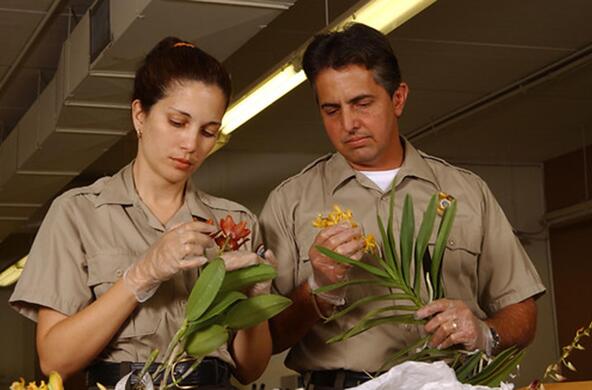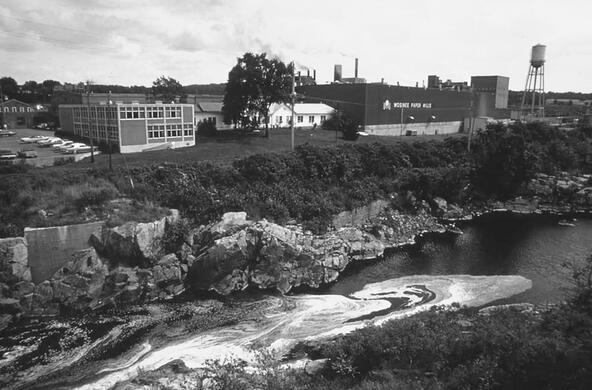Earlier this month, researchers demonstrated that a Eurasian species of fish, the grass carp, had begun reproducing in Lake Erie. This may not sound like alarming news, but unless we take steps to prevent its spread, this animal is poised to disrupt the ecology of the Hudson River and New York’s other inland waters.
Grass carp are like underwater lawn mowers. They reach nearly five feet in length and 100 pounds in weight and are so efficient at consuming vegetation that they have been stocked all over the world as “biocontrols” for problematic weeds. But as with so many misguided introductions, the grass carp will spread out of control. Now that they are in Lake Erie, it is just a matter of time before they swim east to the Hudson River along the Erie Canal.
In the Hudson River, aquatic vegetation helps underpin the food chain and provides essential habitat to fish and wildlife. About half of the river’s original aquatic vegetation was destroyed during the 19th and early 20th centuries by dredging and filling to improve the shipping channel, and the vegetation that remains faces serious threats from storms and the rising sea level. The establishment of a large population of grass carp, a fish that flourishes in large, turbid rivers like the Hudson, could further endanger this habitat and decimate the river’s already embattled native fishes.
More than just the Hudson is threatened. Similar problems could occur in other waters along the course of the Erie Canal, including the Finger Lakes and Oneida Lake, which also contain valuable beds of aquatic plants.
This has happened before. In 1986, Eurasian zebra mussels first appeared in the United States, in Lake Erie, having been transported inadvertently in the ballast water of commercial vessels. The zebra mussels spread quickly, and in 1991, they were discovered in the Hudson. Just one year later it was estimated that 550 billion zebra mussels inhabited the river. This eruption of zebra mussels disrupted the workings of the river’s ecosystem, depleting the phytoplankton at the base of the food chain by more than 75 percent and cutting populations of its fish by as much as 60 percent.
The grass carp is not the only new invader waiting to use the Erie Canal. Two other Asian carp species now swimming into the Great Lakes through the Chicago Canal are likely to use the Erie Canal as they move east to the Hudson, where their appetite for plankton will threaten the food supply of what remains of the once huge shad population in the river. In coming decades, many other potentially harmful species that have arrived through purposeful or accidental introduction are positioned to use the Erie Canal and cause problems for New York’s lakes and rivers.
Fortunately, there still is time to stop the grass carp from invading the inland waters of New York. One solution would be to recreate the natural barrier between Lake Erie and the Hudson River by building a barricade along the Erie Canal that would allow essential canal operations like recreational boat passage while impeding the movement of invaders.
Various types of such barriers have been proposed or installed on canals around the world. This has involved replacing traditional canal locks with hoist or rail systems, chemical or electric barriers, or bubble screens (which deploy a thick wall of air bubbles that impede the movement of mobile creatures). The barrier best suited to the Erie Canal should be determined by a study of alternatives that considers their costs, compatibility with canal operations and effectiveness against invasive species.
Now is the time to perform such a study. Too often, people consider canal barriers only in a crisis, when an invader is already in the process of moving through the canal. Such delayed crisis planning often leads to hurried and flawed designs, wasteful spending and ineffective control of invaders.
Led by groups like the New York State Department of Environmental Conservation and the United States Army Corps of Engineers, and with the assistance of other conservation organizations and scientists, we need to develop and implement a plan that maximizes the benefits that the Erie Canal can provide to New York, while minimizing the risks from the spread of the grass carp and other harmful invaders. The zebra mussel has demonstrated how much ecological damage one species can cause, and the growing international record shows that invasive species are rarely eradicated once established.
We must do this now, before the carp take this decision out of our hands.
David Strayer, a senior scientist at the Cary Institute of Ecosystem Studies, is the author of “The Hudson Primer: Ecology of an Iconic River.” John Waldman, a professor of biology at Queens College, City University of New York, is the author of “Running Silver: Restoring Atlantic Rivers and Their Great Fish Migrations.”






